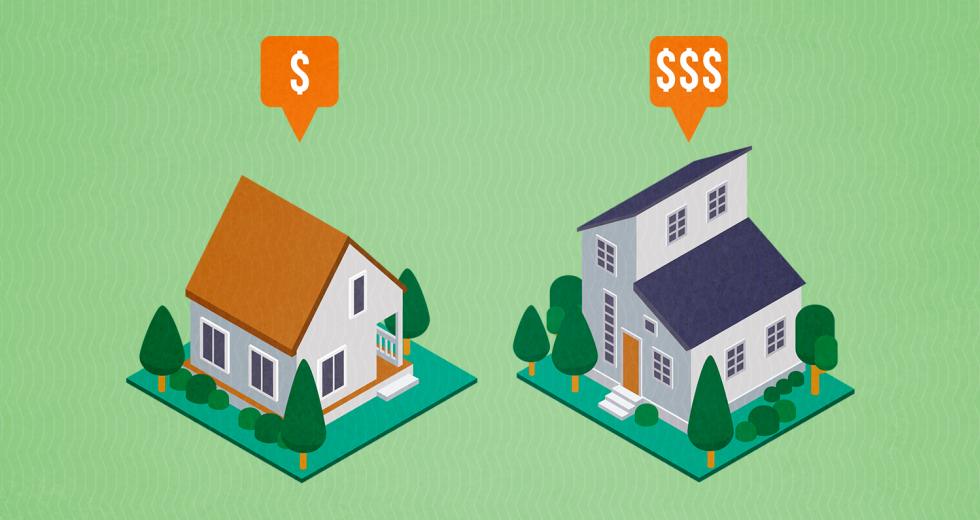This may sound like an article for numbers nerds, but it’s not. Let’s talk about how abusing price per square foot is one of the most common real estate mistakes in Sacramento.
Imagine this scenario. Katie and Jason have a 2,000-square-foot home and they’re overjoyed to see their neighbor just sold his 1,000-square-foot property for $400,000. So they do some quick math on their calculator app and divide $400,000 by 1,000 square feet. The result is the neighbor sold with a price per square foot of $400. They think, “Sweet, our neighbor got $400 per square foot, and our house is 2,000 square feet (here’s where the error happens), so our house is worth $800,000.”
Houston, we have a problem. Katie and Jason hijacked a price per square foot from a smaller home and applied it to their own. They thought they were being smart, but they actually just overpriced their property.
Range of value: It’s easy to get stuck wanting to use a specific price per square foot from a recent sale — that happens all the time in our market. The problem is that there isn’t just one figure that makes sense for every house in a neighborhood. For instance, last year in East Sacramento the price-per-square-foot range for all sales was $262–$606. In a cookie-cutter tract neighborhood like West Roseville, the range was $139–$284. So the question for Katie and Jason becomes: Why does a figure at $400 make sense? Why not $300, $350 or even $550? See how borrowing a random price from a sale down the street can lead to quick value trouble?
Property characteristics: When properties differ in size, condition, location, bed/bath count and upgrades, the price per square foot can change drastically. So on one street we might see a remodeled home selling at $300 per square foot, the same floorplan without upgrades selling at $265 per square foot, and a similar-sized fixer-upper selling at $225 per square foot.
The more house a buyer purchases, the less he or she will pay per square foot.
Diminishing returns: Next time you’re in line at Starbucks, look closely at the prices. Did you know with each larger cup you’re actually paying less per ounce of coffee? The smallest size is 16 cents per ounce, the medium is 14 cents, and the largest is 10 cents per ounce. We see the same principle with most things bought in bulk. This is the Law of Diminishing Returns in effect, because the more we buy, the less we pay per unit. In other words, a seller will make way more money per unit when selling in smaller quantities, while a consumer will save more when buying larger quantities.
This makes sense when buying in bulk as a consumer, but for some reason homeowners don’t often apply this thinking with their own real estate. Here’s the truth though. The more house a buyer purchases, the less he or she will pay per square foot: Larger homes tend to have a lower price per square foot and smaller homes tend to have a higher price per square foot. In the case of Katie and Jason’s house, they borrowed a price per square foot that made sense for a house half their size, but still expected buyers to pay that amount for their larger home. They ignored the Law of Diminishing Returns.
So, now that we’ve addressed everything wrong with Katie and Jason’s financial evaluation, let’s look at some ways they could have gotten it right.
1) Pay attention: It’s good to be in tune with what buyers are paying, so make sure to watch price-per-square-foot trends in your neighborhood. But be careful not to borrow a price per square foot that makes sense for a house far different than yours — in size, amenities, age, etc. Not only is this one of the easiest ways to overprice your home, it’s also a quick way to have appraisal issues. If you get into contract at an unrealistic price, the appraisal might rightly come in lower.
2) Give the most weight to comps: Sometimes we get so distracted by the bling of a high price per square foot that we fail to see other more similar homes. This is why I recommend setting aside price per square foot figures and asking one basic question: What has sold recently that is actually similar to your home? A higher price per square foot can be like a tractor beam for attention. Put on your appraiser hat by looking to similar homes to justify value.
In closing, it’s really easy to abuse price per square foot in real estate if we’re not careful, so it’s critical to understand how it works. The good thing is it’s not rocket science, but more like a cup of coffee.
Join Ryan every other month as he tackles the big real estate issues in our region.



